Using a first-principles approach, researchers have discovered that the differences in the rotational rate of the solar system are due to the inward and outward flow of cations and electrons. Plus, JWST’s first list of observations, a Starlink launch, dinosaurs, raining sand, and a review of episode two of this season’s For All Mankind.
Podcast
Show Notes
New info on JWST first images
- NASA press release
More Starlinks went to space
New trash removal method for ISS
Dinosaurs: why they had tiny arms
- University of Minnesota press release
- “New giant carnivorous dinosaur reveals convergent evolutionary trends in theropod arm reduction,” Juan I. Canale et al., 2022 July 7, Current Biology
The physics of raining sand
- NASA press release
- “Ultracool dwarfs observed with the Spitzer infrared spectrograph – II. Emergence and sedimentation of silicate clouds in L dwarfs, and analysis of the full M5–T9 field dwarf spectroscopic sample,” Genaro Suárez and Stanimir Metchev, 2022 May 2, Monthly Notices of the Royal Astronomical Society
Solar system rotation rate due to subatomic interactions
- Caltech press release
- “Neutral-charged-particle Collisions as the Mechanism for Accretion Disk Angular Momentum Transport,” Yang Zhang and Paul M. Bellan, 2022 May 17, The Astrophysical Journal
The Moon is not as porous as previously thought
- MIT press release
- “Bombardment history of the Moon constrained by crustal porosity,” Ya Huei Huang et al., 2022 July 7, Nature Geoscience
Transcript
Today, we bring you the news that was breaking while we were writing this episode. Specifically, we have the list of objects JWST has observed that will be released on July 12. This breaking news means I’m recording this opening without Erik, who will be here today, bringing us spacecraft, the Moon, and a review of For All Mankind.
I have that list of objects as well as a bunch of theoretical science-matching observations and even some dinosaurs.
Rawr.
All of this and more, right here on the Daily Space.
I am your host Dr. Pamela Gay.
And we’re here to put science in your brain.
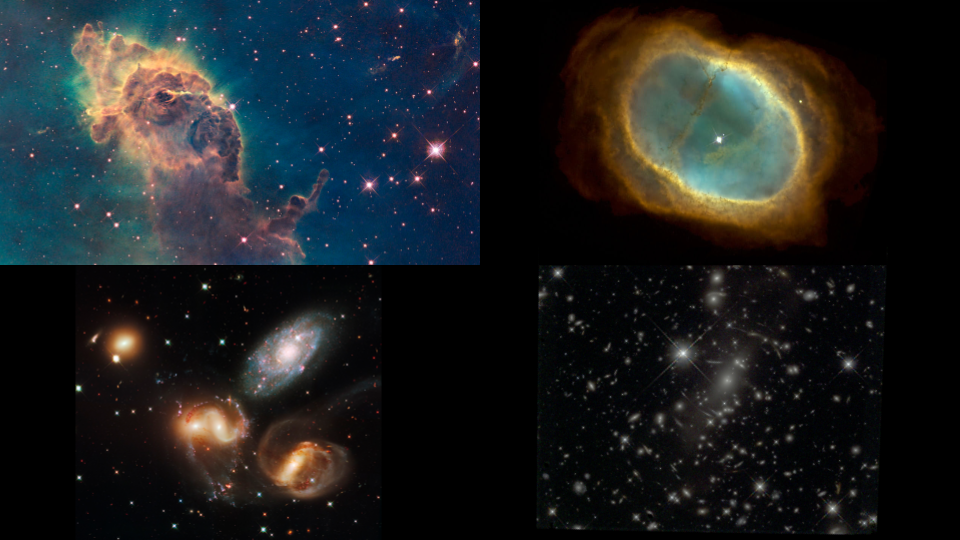
On July 12, JWST is going to release its first multi-color, fully processed science images. For the past several weeks, people have been playing a wild guessing game of “just what will JWST look at first?”
Well, on July 8, NASA decided to end that guessing game by releasing a list of targets. They span most of the range of what JWST is designed to see. There is a star-forming region: the Carina Nebula. There is a planetary spectrum of the gas giant WASP-96 b. There is a pretty object – Stephan’s Quintet – and a dying object – the Southern Ring Nebula. And where I thought they would look at a deep field to show us the beginning of the universe, they are doing something unexpected.
Instead of looking directly at the early universe, JWST looked at SMACS 0723, which is a nearby galaxy cluster, so that JWST could – like so many other scopes – use its gravitational lensing to see into the early universe.
I’m intrigued by this decision. While it’s exciting to see just how far back JWST will be able to see with this gravitational boost to its observing powers, I really was looking forward to undistorted views of early galaxies.
I’m sure they had a reason, and we’re just going to have to wait until July 12 to learn that reason.
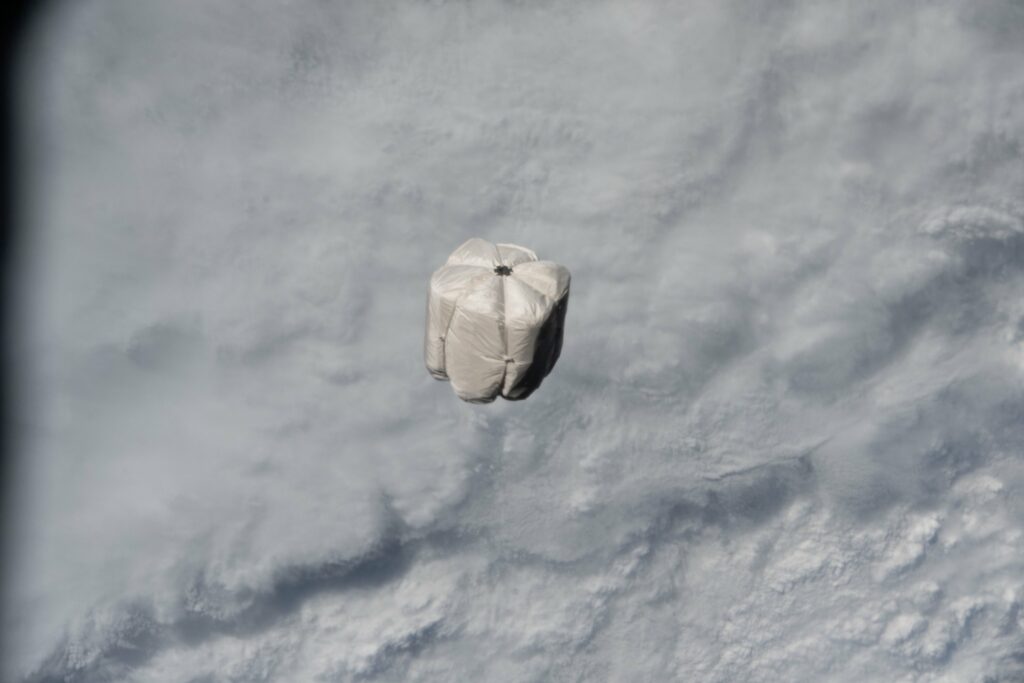
SpaceX launched yet another Starlink mission on July 7. Booster 1058 completed its thirteenth flight, only the second Falcon 9 booster to do so. This was the booster that launched Bob and Doug to the International Space Station (ISS) back in 2020, among other important payloads for commercial and government customers. Eight and a half minutes after launch, 1058 successfully landed on the droneship Just Read The Instructions, even though the webcast cut out before showing it there. As usual, SpaceX signed off before deploying the Starlink satellites.
From some debatable space trash deployment, we go to some actual space trash deployment, this time from the ISS.
One of the capabilities of the new Nanoracks Bishop airlock (besides deploying more CubeSats) is jettisoning bags of trash from the International Space Station (ISS). This is traditionally done by cargo spacecraft — those that don’t return science intact like Dragon. However, as a demonstration, the airlock deployed some trash itself.
First, the Canadarm unberthed the airlock and maneuvered it so it was pointed opposite the direction of travel of the station. Then, the airlock used its piston to eject the trash bag. Because it was ejected retrograde, it will end up in a lower orbit than the ISS and burn up in a couple of weeks.
Okay, I have to admit that this next story isn’t strictly Earth Science, and it really is not space science, but since dinosaurs were eventually killed off by a meteor, and we just like dinosaurs, we are going to sneak some dinosaur science into this show.
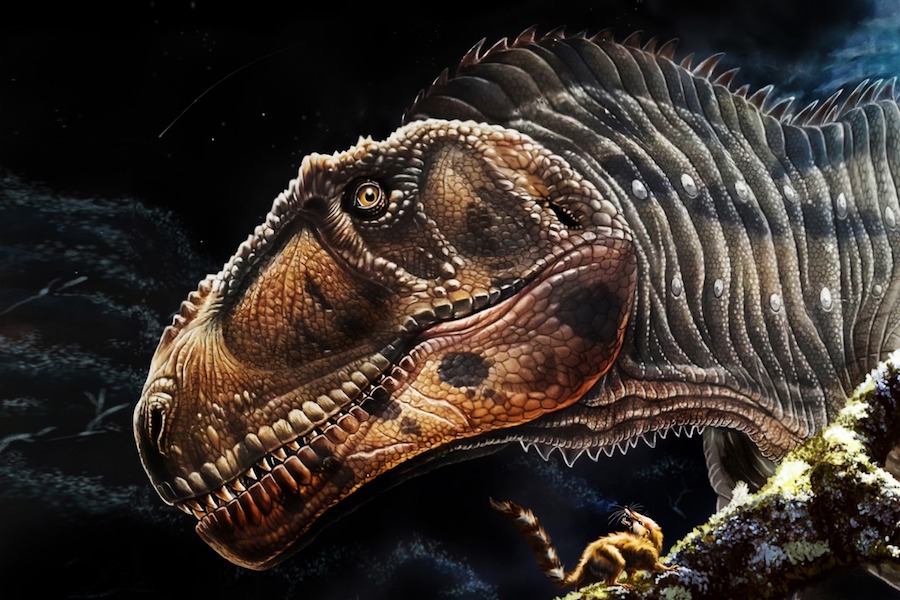
Most of us are familiar with the tiny armed Tyrannosaurus rex. At some point, probably around age five or six, I think many of us have asked, “How did a dinosaur with such a large head and tiny arms get back up if it fell over? Why would evolution create such a bizarre arm-to-leg-to-head ratio?”
T. rex is just one of a small handful of these weirdly structured carnivores that include the Giganotosaurus that was in Jurassic Park, and there is the newly discovered Meraxes gigas. It is this newly discovered Meraxes that may allow us to finally make sense of these giant feathered beasts.
Discovered in Patagonia in 2012 and slowly extracted and analyzed, this dino’s 90-95 million-year-old skeleton is one of the most complete found in the Southern Hemisphere. According to Peter Makovicky: The neat thing is that we found the body plan is surprisingly similar to tyrannosaurs like T. rex, But, they’re not particularly closely related to T. rex. They’re from very different branches of the meat-eating dinosaur family tree. So, having this new discovery allowed us to probe the question of, ‘Why do these meat-eating dinosaurs get so big and have these dinky little arms?’
Makovicky and his team’s work is published in a new paper in Current Biology where they describe how the discovery of multiple skeletons that show convergent evolution on this tiny arms-giant head structure hints at why this could happen. As Makovicky explains: We shouldn’t worry so much about what the arms are being used for, because the arms are actually being reduced as a consequence of the skulls becoming massive. Whatever the arms may or may not have been used for, they’re taking on a secondary function since the skull is being optimized to handle larger prey.
Put another way, evolution said, “Sure, you can have a bigger head to kill bigger things, but imma take your arms and make them tiny.”
And now you know.
And now, we turn back to more specifically space science kinds of stories.
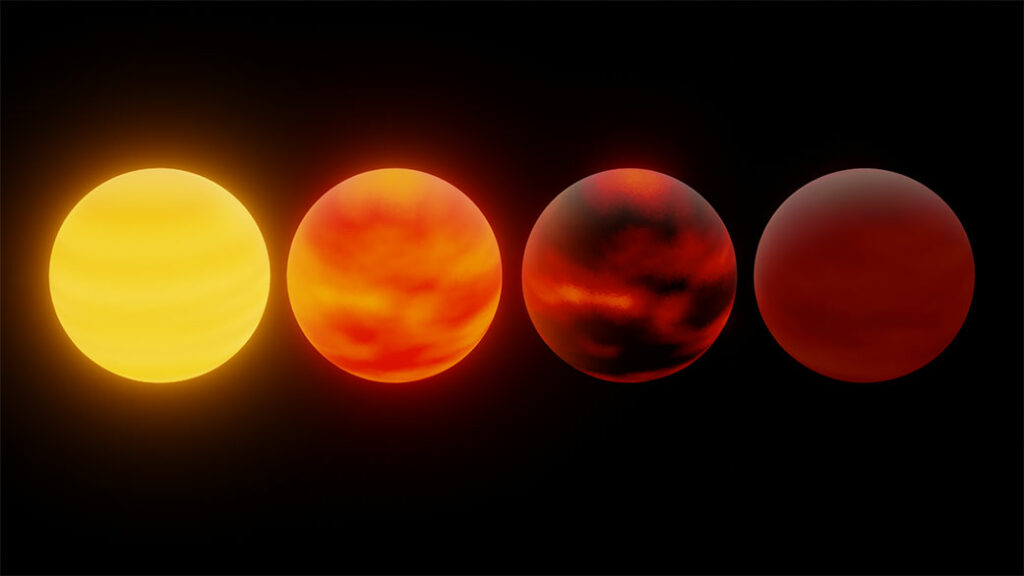
As we find more and more worlds across our galaxy, researchers are focusing more and more on what kinds of environments can support life and what kinds of weather can make existence harder or easier. And it turns out that there are conditions out there that create weather that not even sci-fi writers had led me to expect.
On objects ranging from gas giants to brown dwarfs, there are atmospheric layers that are so warm that stuff that sand is made of – silicates – can form atmospheric layers. And, just like water vapor in the atmosphere can turn into drops that fall as rain, it is possible for the small dust grains to glom together and fall from the sky as pieces of sand.
While it’s believed that Jupiter has this kind of a lawyer deep in its atmosphere, we don’t have the ability to see that layer, so we can’t study that layer directly. To see what is going on, we need warmer objects, and to find those objects, researchers went hunting through the Spitzer Space Telescope archive looking for brown dwarfs. These objects are tens of times larger than Jupiter and may temporarily burn heavy hydrogen – deuterium and tritium – in their cores, but for most of their lives, they just hang around as this weird transition object that isn’t really a planet and kind of failed at being a star.
In a new paper in Monthly Notices of the Royal Astronomical Society, researchers Genaro Suarez and Stanimir Metchev describe their analysis of 113 red and brown dwarfs. They found that it is in the cool brown dwarfs where silicate clouds can be seen. In these 1000-1700 degrees Celsius stars, these spectra show clear evidence of vaporized rock clouds.
This is one of those delightful research projects where a young researcher went searching through a data archive to see if something that was expected to exist could actually be found. According to Suarez: We had to dig through the Spitzer data to find these brown dwarfs where there was some indication of silicate clouds, and we really didn’t know what we would find. We were very surprised at how strong the conclusion was once we had the right data to analyze.
Moral? Great science – and raining silicate – can be found in data archives, just waiting for a researcher to search for the right parameters.

A remarkable amount of science consists of theorists saying, “Hey, we should see this thing!” and observers either peering through the sky or searching through data archives to say “yay” or “nay” to those theorists.
The nays are the much more interesting situations.
For instance, at the freshman physics level of explanation, solar systems form as a cloud of material collapses and spins faster and faster. It is completely straightforward, totally makes sense, and predicts the inner regions of solar systems should rotate far faster than we observe. We can see this happening in our solar system, and we can see it in the gas motions of young solar systems still forming.
And we don’t generally have a “graduate school” level of explanation that can explain why things rotate slowly. Somehow, somewhere in that mix of gas, dust, light, and energy, some force or friction is dumping angular momentum and allowing for the slow roll of systems like ours.
The leading excuse for this behavior has been magnetic fields causing turbulence, and magnetic fields are complicated enough that most folks aren’t wanting to do the maths and modeling needed to confirm or deny this idea. But one researcher was willing to look deeper. Paul Bellen explains: People always want to blame turbulence for phenomena they do not understand. There’s a big cottage industry right now arguing that turbulence accounts for getting rid of angular momentum in accretion disks.
Working from first principles with graduate student Yang Zhang, Bellen has run massive computer simulations that look at all the interactions in an accretion disk, including charged particles and neutral atoms, to see how they respond to magnetic and gravitational forces. Bellen explains further: This model had just the right amount of detail to capture all of the essential features because it was large enough to behave just like trillions upon trillions of colliding neutral particles, electrons, and ions orbiting a star in a magnetic field.
And in this massive simulation, they found, and I quote from the Caltech press release: …collisions between neutral atoms and a much smaller number of charged particles would cause positively charged ions, or cations, to spiral inward toward the center of the disk, while negatively charged particles (electrons) spiral outward toward the edge. Neutral particles, meanwhile, lose angular momentum and, like the positively charged ions, spiral inward to the center.
This means that particles of different charges act in different ways, and using straightforward, freshman physics, angular momentum doesn’t work. Instead, a more complex “canonical angular momentum” theory has to be used that takes into account charge and the effects of electromagnetism. According to Bellen: …the inward motion of cations and outward motion of electrons results in the disk becoming something like a gigantic battery with a positive terminal near the disk center and a negative terminal at the disk edge. Such a battery would drive electric currents that flow away from the disk both above and below the plane of the disk. These currents would power astrophysical jets that shoot out from the disk in both directions along the disk axis. Indeed, jets have been observed by astronomers for over a century and are known to be associated with accretion disks, though the force behind them has long been a mystery.
And now, we understand the jets, the slow roll of solar systems, and so much more because two people were willing to work the maths, write the simulations, and publish their work in The Astrophysical Journal.
This is your reminder that there are still questions waiting to be answered that just require someone to be willing to do the detailed work that most people don’t want to do.
That was enough theory for my brain. Let’s switch over to Erik and take a look at the Moon.
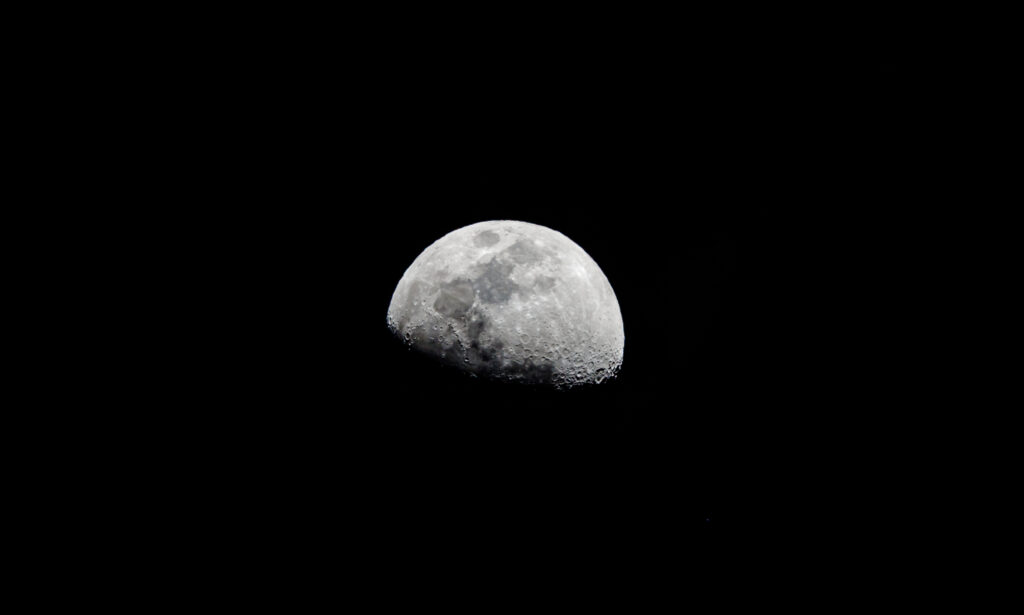
In addition to being one of the major plot points of my favorite video game, Portal 2, the Moon has been a source of scientific research for centuries. New research in the journal Nature Geoscience shows just how porous the Moon’s crust is. Porosity is a measure of the amount of empty space between rock particles.
In a period between 4.4 and 3.8 billion years ago, the Moon was hit by a significant number of space rocks during a time called the Heavy Bombardment. Previous assumptions thought that the Moon’s porosity happened evenly during the Bombardment. The new study from MIT found that the majority of the Moon’s crust was altered in a series of massive impacts early on, not spread out. The later craters actually compressed the surface. Also, the Moon may have only been hit by two times the impacts on its surface, not more as previously thought. According to study co-author Jason Soderblom: We know the moon was so bombarded that what we see on the surface is no longer a record of every impact the moon has ever had because, at some point, impacts were erasing previous impacts.
To determine these two things the team used data on 77 moon craters from NASA’s Gravity Recovery and Interior Laboratory, GRAIL, spacecraft. The 77 craters spanned the oldest through the newest parts of the Moon. The researchers analyzed the craters by age, size, and location. Using the youngest craters as a start, they computed how many impacts were needed to match the observed porosity of the oldest craters. The older craters were twice as porous as the younger craters.
The previously mentioned lower rate in the later period sets a bound on the asteroid impacts across the rest of the solar system and how cratering affects rocky bodies.
Review

Episode 2 of For All Mankind’s third season continues the story in new and interesting ways. I’ll try to keep the spoilers to a minimum, but you should watch the episode right after this if you haven’t already watched it.
In Episode 2, the Polaris Orbital Hotel is salvaged and converted into a Mars spacecraft for a different company — Helios, a copy of Relativity Space and SpaceX, with a billionaire founder, an ostensibly egalitarian company structure, methane oxygen engines, and 3D printed tanks.
Helios wants to be the first on Mars before either of the nation-states: the United States or the Soviet Union. In this episode, the three projects choose the crews for their Mars spacecraft, though for NASA and Helios they don’t get who they initially wanted.
NASA leadership finally wrestles in this episode with the idea that not all astronauts have to be macho test pilots – which is something that did happen in real life as well but much earlier than 1992 – and a clash between old and new ideas on how to run NASA, which the old ideas lose, setting up more tension for the rest of the season. And with that loss, so goes a major character who has been with the show since episode one. The character gets some closure, though I don’t like how NASA made this decision in the episode; one of the characters had to get her way, and that’s not how you run things when it’s important. The consequences of this decision will be interesting, to say the least.
Also in this episode, a subplot I actually like started to take on more significance. I have been wondering what they were gonna do with it since they started setting it up in the very first season, and I’m interested to see what they do with it. If I say anything more about it, I’ll give things away so you’ll have to watch the episode for yourself and see if you can figure out what I’m talking about.
Of course, this episode also continued the squicky plotline I still don’t like, so you win some, you lose some. I’m betting it’s to set up some tension during the Mars trip. There’s lots of drama that could happen during the trip that would be more interesting than the romantic relationship between two characters.
As I mentioned in my last review, and it’s true of the previous seasons, they still haven’t managed to make any of the technical discussions in this episode feel natural, which really bugs me. This is a show based on what would happen if technology developed differently than our timeline, but they never really make this key part feel like it flows with the rest of the politics and other narrative elements of the show. Hopefully, this will change in future episodes, but I’m not holding my breath.
For All Mankind is created and written by Ronald D. Moore, Matt Wolpert, and Ben Nedivi and produced by and available on Apple TV+.
This has been the Daily Space.
You can find more information on all our stories, including images, at DailySpace.org. As always, we’re here thanks to the donations of people like you. If you like our content, please consider joining our Patreon at Patreon.com/CosmoQuestX.
Credits
Written by Pamela Gay, Beth Johnson, Erik Madaus, and Gordon Dewis
Hosted by Pamela Gay, Beth Johnson, and Erik Madaus
Audio and Video Editing by Ally Pelphrey
Content Editing by Beth Johnson
Intro and Outro music by Kevin MacLeod, https://incompetech.com/music/


 We record most shows live, on Twitch. Follow us today to get alerts when we go live.
We record most shows live, on Twitch. Follow us today to get alerts when we go live.